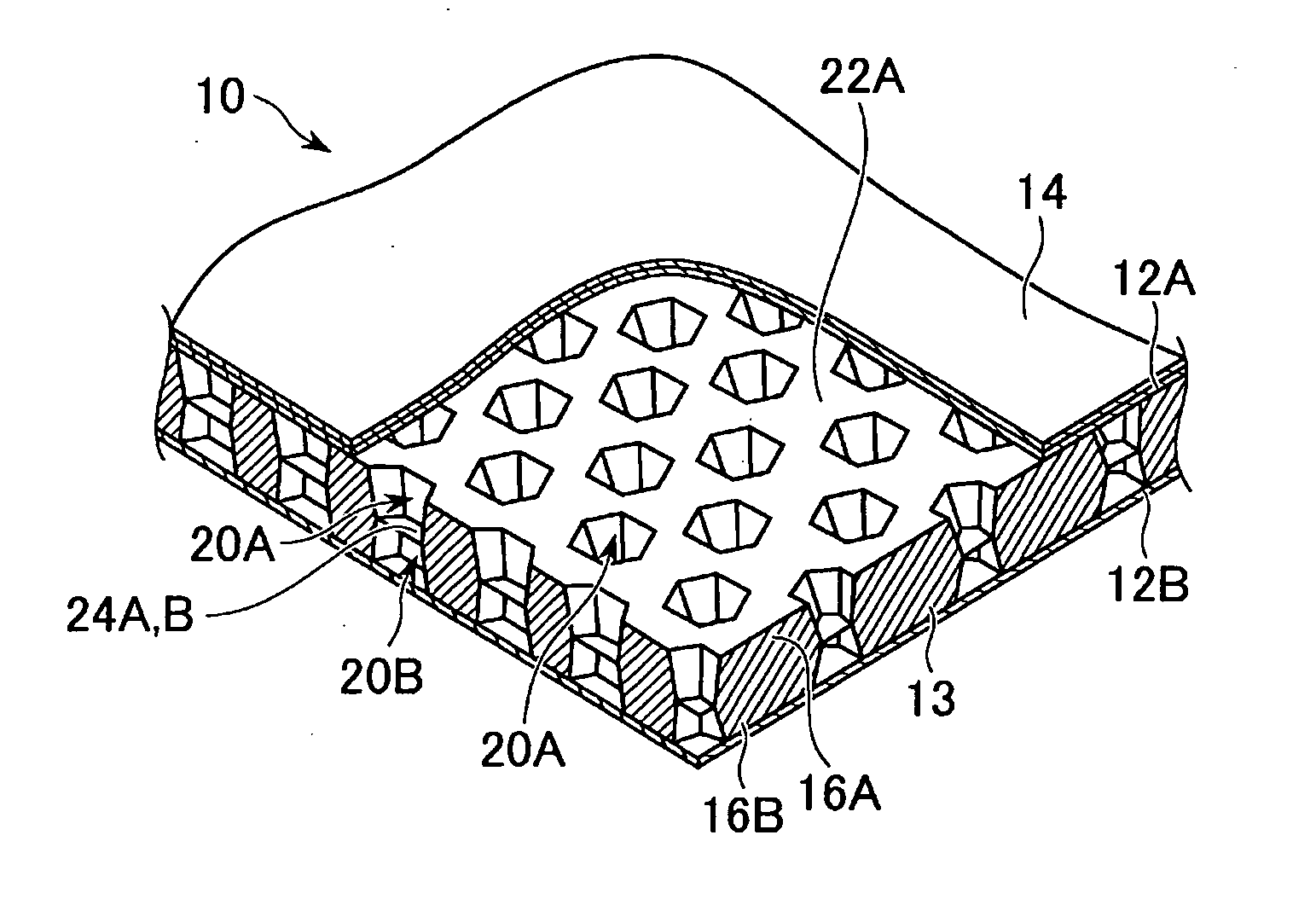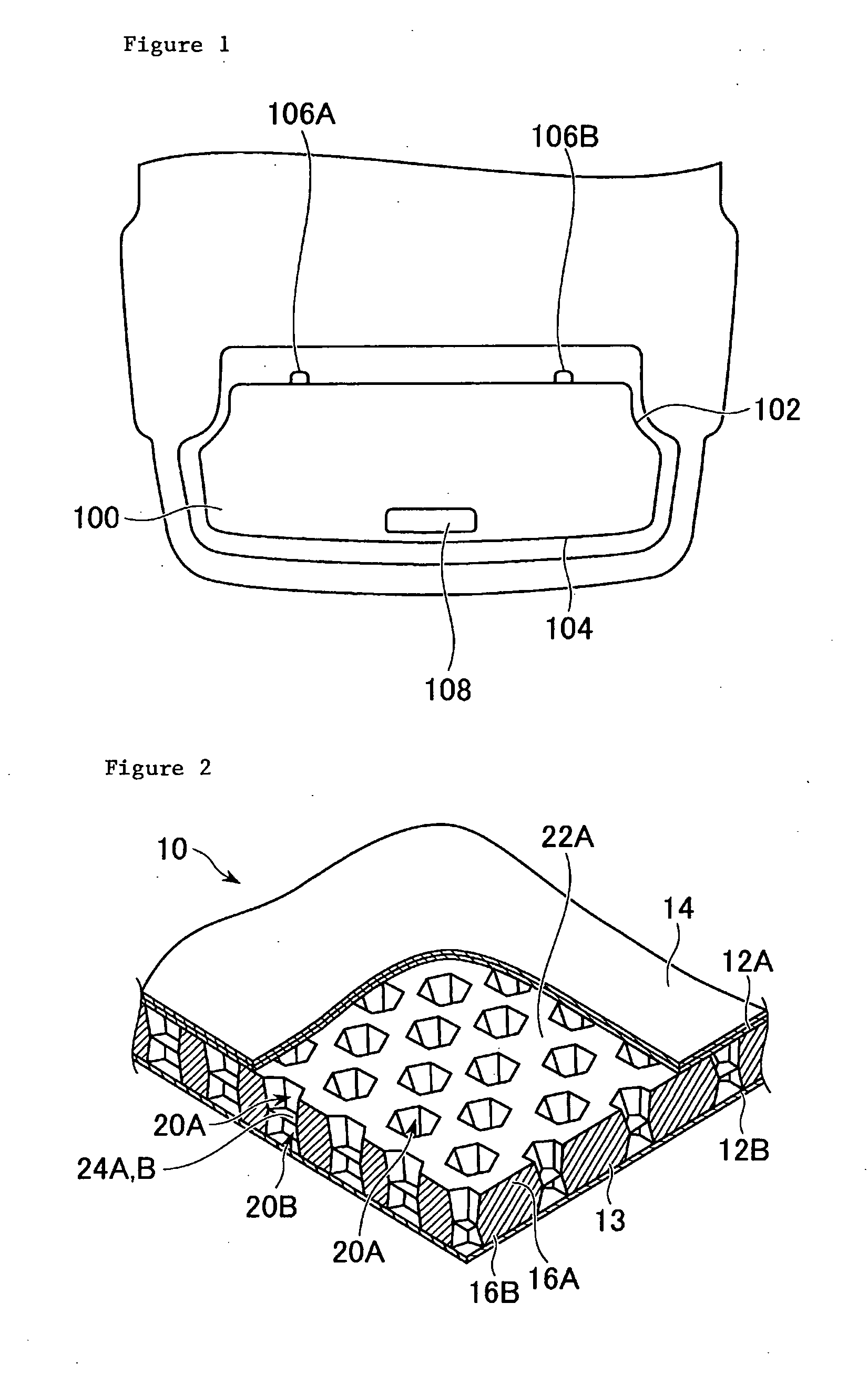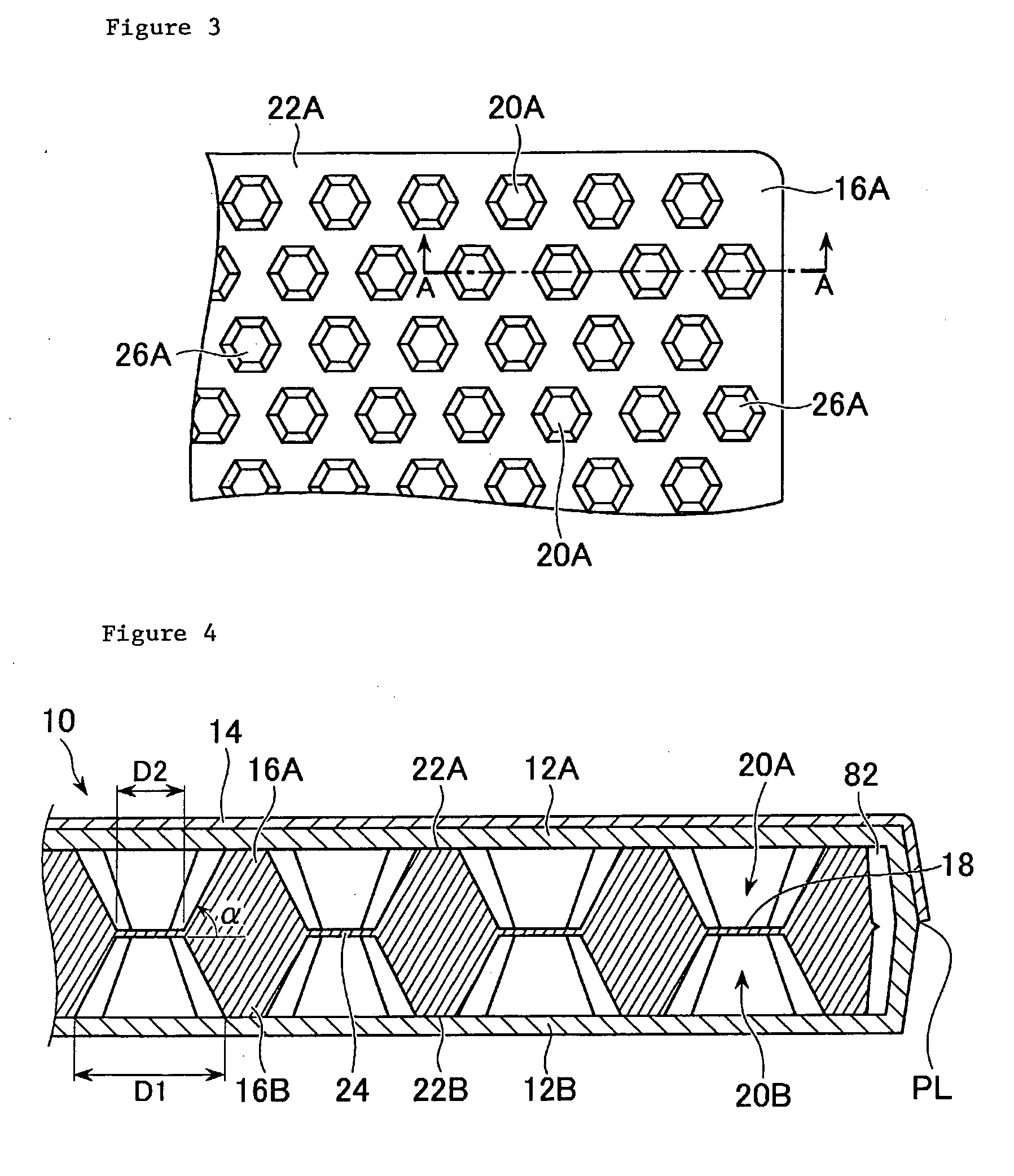Core material for sandwich panel, method of molding core material for sandwich panel, sandwich panel, and method of molding sandwich panel
a sandwich panel and core material technology, applied in the field of core material for sandwich panels, can solve the problems of small limitation of the shape of the molded product, the inability to achieve sufficient flexural rigidity as an entire sandwich panel, and the difficulty of forming a molded product including a sealed hollow portion inside only by injection molding
- Summary
- Abstract
- Description
- Claims
- Application Information
AI Technical Summary
Benefits of technology
Problems solved by technology
Method used
Image
Examples
Embodiment Construction
Embodiments of the core member made of a thermoplastic resin for a sandwich panel, the method of forming such a core member, the sandwich panel including such a core member, and the method of forming the sandwich panel according to the present invention will be explained in detail with reference to the drawings. The following embodiments are based on a case where the sandwich panel is used for a cargo floor lid for an automobile which requires a light weight and a high stiffness.
As shown in FIG. 1, the cargo floor lid 100 for the automobile requires a complicated profile because it has to be accommodated in a limited rear space. More specifically, a curved portion 102 with a small curvature for evading a tire house, a curved portion 104 with a large curvature along a rear shape of the automobile, and a local protrusion portion 106 constituting a hinge portion for closing and opening the cargo floor lid are necessary. In addition, a concave portion 108 on its surface constituting a g...
PUM
| Property | Measurement | Unit |
|---|---|---|
| Size | aaaaa | aaaaa |
| Length | aaaaa | aaaaa |
| Length | aaaaa | aaaaa |
Abstract
Description
Claims
Application Information
 Login to View More
Login to View More - R&D
- Intellectual Property
- Life Sciences
- Materials
- Tech Scout
- Unparalleled Data Quality
- Higher Quality Content
- 60% Fewer Hallucinations
Browse by: Latest US Patents, China's latest patents, Technical Efficacy Thesaurus, Application Domain, Technology Topic, Popular Technical Reports.
© 2025 PatSnap. All rights reserved.Legal|Privacy policy|Modern Slavery Act Transparency Statement|Sitemap|About US| Contact US: help@patsnap.com



